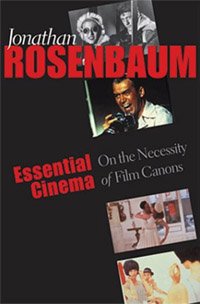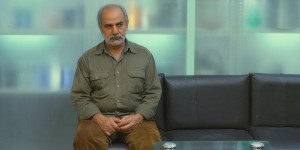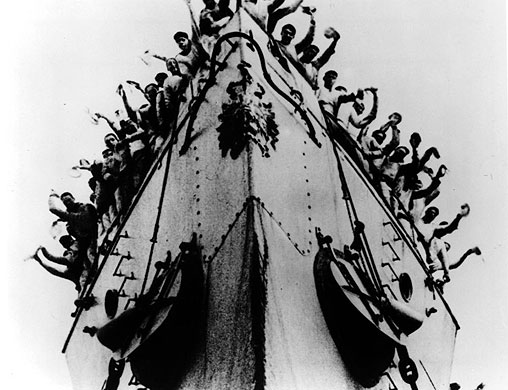From Kevin Lee’s web site, posted circa 2004. — J.R.
The following questions for Jonathan Rosenbaum were compiled by myself and esteemed colleagues at the IMDb Classic Film Board. They were e-mailed to Rosenbaum on the occasion of the release of his book ESSENTIAL CINEMA. His responses appear after each question.

Q- I was actually quite surprised when I saw that your book argued for the necessity of canons, given your previous criticism of the AFI’s top 100 lists and how it institutionalizes popular taste in much the same way as any canon does. Also, you testify to the profound affect that the Sight and Sound top 10 list had on you during your college years (as was the case for me) — but couldn’t one say that this, or any list, may be as limiting in its own way (in the perspective it espouses) as the AFI list? If the goal is to encourage people to see as many things as possible, I wonder if any canon or list alone is up to that task. Would you agree to that the problem is not in these canons or lists but in our attitudes towards them (for example, I don’t think it was the virtue of the Sight and Sound list in itself, but your attitude towards it, that made it worthwhile)? Read more

Researching Iranian cinema, even contemporary Iranian cinema, can sometimes be a dicey undertaking, in part because of the variant spellings of names and even a few film titles. I thought enough of Seyyed Reza Mir-Karimi ‘s first feature, The Child and the Soldier (2000), to include it on my list of my 1000 favorite films, included as an appendix in my 2004 collection Essential Cinema. And Fred Camper thought enough of his second feature, Under the Moonlight (2001), to begin his capsule review for the Chicago Reader by writing, “A refreshing version of Islam in which charity and justice are more important than rigid adherence to rules.” And now that I’ve seen his latest feature, which is Iran’s official entry for this year’s Academy Awards, Today — or Today!, as it appears to be written on the screen in Persian -– it’s clear that this director qualifies as a master. But now (today) his name is mainly given in Western sources as Reza Mirkarimi, without the Seyyed or the hyphen, so when I looked up this name on my own web site, I could find nothing. So it seems both ironic and ironically appropriate that the most ethical and humanist cinema we can find in the world today both engages directly with and is often confounded by our ignorance about the world we inhabit. Read more
From AFI Education Newsletter (January-February 1982). Because of the length of this, I’ll be running it in two installments. — J.R.
Course File:
EXPERIMENTAL FILM:
FROM UN CHIEN ANDALOU TO CHANTAL AKERMAN (Part 2)


UNIT III: German and Soviet Experimentation in the Twenties
Part of the strategy of studying German and Soviet experimentation over roughly the same period is the striking contrast between these national film movements and their relationship to popular genres as well as their different themes and subjects. On the one hand, one finds the efforts of a Fritz Lang to experiment with the thriller format, and those of F.W. Murnau (and his scriptwriter Carl Mayer) to construct an essentially non-verbal visual language. On the other hand, one finds the relatively less script-bound experiments with montage and certain documentary principles provided by the Soviet filmmakers. An interesting topic to consider speculatively is the Soviet version of Lang’s first Dr. Mabuse film, which was re-edited by Eisenstein for Russian audiences.




Screenings:
Bronenosets Potemkin (The Battleship Potemkin) (1925, 65 min.) Directed by Sergei Eisenstein — Perhaps the most famous of all experimental films, including some 1300 shots, Eisenstein’s classic is structured in five “acts.” Along with Strike, made the previous year, this is the most accessible of Eisenstein’s silent films, and might be contrasted with October (or significant portions thereof) in terms of the different principles of montage at work. Read more








